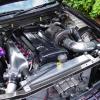No Water Pressure
Announcements
-
Similar Content
-
Latest Posts
-
Evening fam, Pretty much what the title asks, I have looked all over and can’t find a proper answer expect one post from almost a decade ago which is vague. ive seen photos and they look pretty much identical, would an r33 GTR N1 reo work on an r32? reason I ask is they are cheaper to buy… $700 compared to 1k+ for an r32 n1 reo
-
Couldn't help myself, had to start putting it together.... It really is a solid bit of kit. Probably stronger than i would have made it myself to be fair! 🤣🤣 Sweating like a pig after that. Bloody hot and muggy day today, time for a swim now!
-
Yeah was thinking that. I've had the car go lower idle possibly around 650rpm every once in a long time after pouring fuel and would sound quite rough like a misfire, almost like it's shit fuel or something but who knows.
-
@Wazmond you are correct, my bad, was not my intent https://www.facebook.com/share/15ZMn5oXtc/ Updated Event (so its not private and can be shared easier) Attempting to coordinate a big push of Stagea's to this years GTR Festival. Great event last year and hoping for the same this year. I've emailed them to ask to set a location aside for the Stageas for the show and shine - they are happy to do so if we can get them numbers, I'm happy to keep track of that. Entering as Nismo category. I'll be road tripping up from Melbourne, would be cool to convey if people are interested, maybe there is SAU convoys from each capital? If you have ideas about that let me know. https://gtrfestival.com.au







Recommended Posts
Create an account or sign in to comment
You need to be a member in order to leave a comment
Create an account
Sign up for a new account in our community. It's easy!
Register a new accountSign in
Already have an account? Sign in here.
Sign In Now